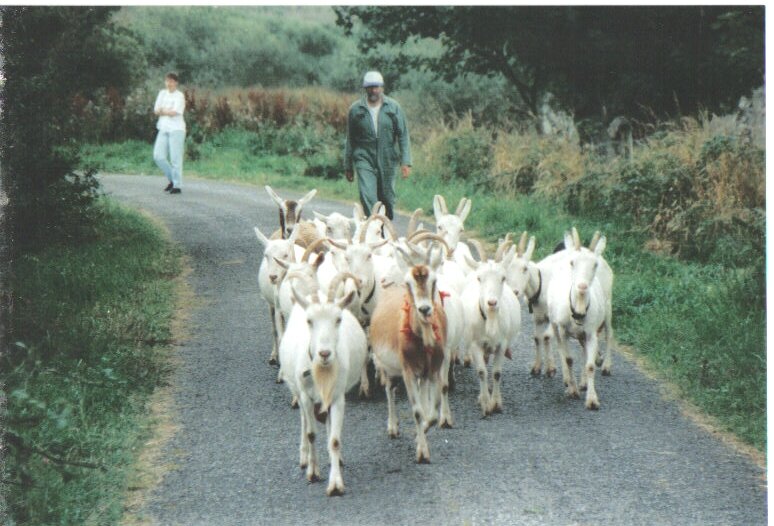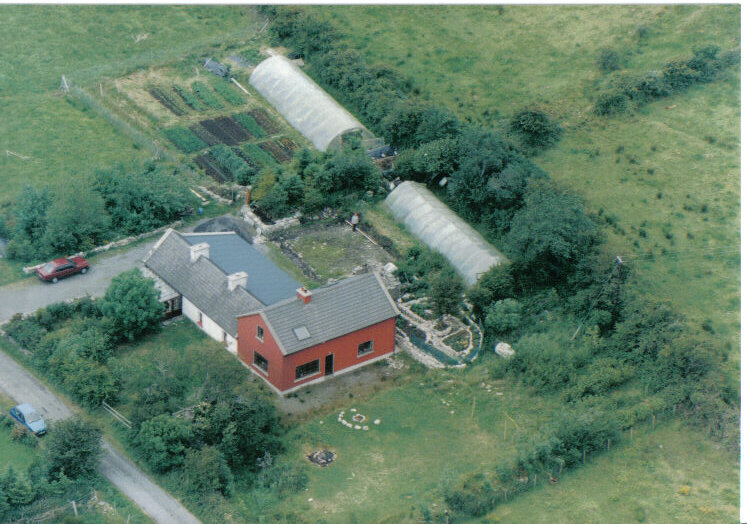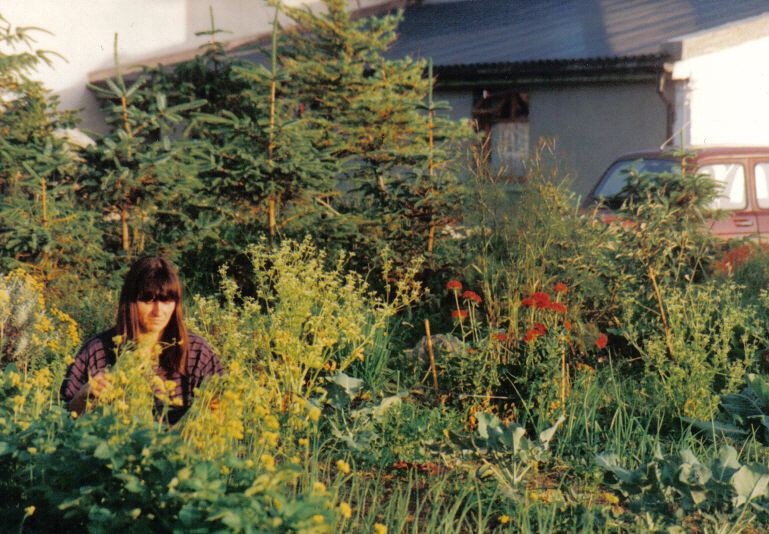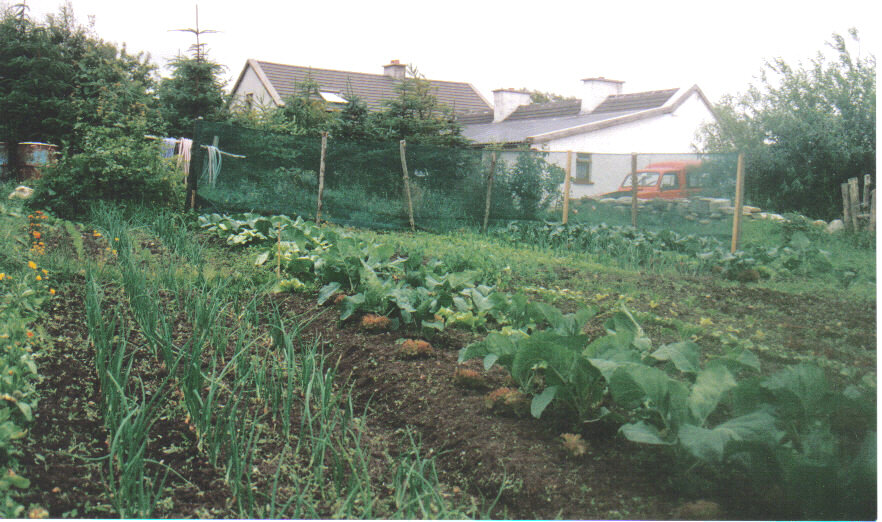"Self–sufficiency" revisited in a time of crisis
“The concept of self-sufficiency, so important in the debate about the future of our planet, is as rich and complex as the debate itself and evolves all the time.” (Hans Wieland)
This article has seen many revisions and additions since first published 6 years ago and this latest revision was sparked by Michael Viney’s last column in The Irish Times and is
Dedicated to Eithna and Michael Viney
On Saturday February 4th 2023, Michael Viney retired from his column “Another Life”, which he produced for The Irish Times for more than 45 years. On October 8th 1977 he wrote in his first column about moving West to Thallabawn in Co. Mayo: “…the idea of this move promoted itself with a fine disregard of other events in our lives. It fed on our belief that anyone can do almost anything, given the will, the muscle and the right advice.” He continues: ”Self-sufficiency today amounts to much more than than one would judge from The Good Live on television… Far from exalting the noble savage or trying to get back to nature by ignoring technology, it tries to demystify it and bring it under domestic or communal control.”
That was one year after John Seymour published “The Complete Book of Self-Sufficiency” and eight years before we arrived in Ireland with that book in our suitcase. His articles in Irish Times were always an inspiration for us and one of the first pieces we read every Saturday. It was one of the longest running newspaper columns in the world. We wish Michael and Eithna a happy retirement from writing professionally with so much thanks for their wise and often challenging, but always interesting writing about their daily lives and struggles in the West of Ireland.
Living the Good Life
When we began our rocky journey to a bit more self-determined and self-sufficient life in 1985, we used “The Complete Book of Self-Sufficiency” by the late John Seymour published in 1976 for inspiration and guidance. Taking it of the shelf now the first few paragraphs make for interesting reading: ”Self-sufficiency is not going back to some idealized past in which people grubbed for their food with primitive implements and burned each other for witchcraft….On the contrary, it is the striving for a higher standard of living, for food which is fresh and organically grown and good, for a good life in pleasant surroundings, for the health of body and peace of mind…”.
Back then for many of us in search of a better life meant living of the land in harmony with nature, growing and producing as much food as possible, but it also meant a more self- determined existence. In an interesting twist of fate as many people and families from continental Europe and the UK moved to Ireland in the late 70’s and early 80’s, when deserted cottages and land were cheap, many Irish people at the same time moved in the opposite direction for work, when unemployment in Ireland was high.
What happened next…
What happened next was commented on by the former TV presenter and current Irish Times columnist Michael Viney, who himself left Dublin in 1977 with his family for a simpler life on one acre in County Mayo. In an article from 25th May 2002 “Self-sufficiency in a world gone mad” he writes: “Self-sufficiency, which sought to express an attitude rather than an absolute, died a little of embarrassment. It claimed too much for a lifestyle that has rarely gone beyond a voluntary frugality in the countryside and a lot of hard work in growing, rearing and processing food (I leave out ‘simplicity’ - there is nothing simple about it).”
The article appeared on the eve of a conference I had organised at The Organic Centre titled “Self-sufficiency in the 21st century” where guest speaker Michael Kelly claimed his new GIY (Grow It Yourself) movement “wants to take the ‘self’ out of ‘self-sufficiency’ and support local growing networks” and many participants at the conference thought this could be the new self-sufficiency movement, as it already included people keeping some livestock, preserving food for the winter and discovering wild foods for free.
Self-sufficiency revisited in a time of crisis
Fast forward to 2020 with restrictions of movement in place and advised to “Stay at Home”, die idea of self-sufficiency had suddenly gotten an unexpected revival. Growing some of your own food or supporting local producers had got a new meaning. Suddenly we were forced to re-think how we live and consume, how we could do things differently and it also opened up a new debate about alternative lifestyles, our ecological footprint, sustainable living concepts, permaculture and ecological and social building. The coronavirus pandemic led to an outburst of activities previously not seen in that magnitude: Gardening and growing your own food, baking bread, cooking and fermenting, home brewing and DIY. Seed suppliers had to temporarily close their online shops, because of unprecedented demands. In some supermarkets flour was in short supply. We struggled to order wine yeast online. What suddenly seemed to become a necessity in 2020 was a choice for us nearly 35 years ago: A bit more self-sufficiency!
And just when we thought that some normality could be re-established in 2022, the war in Ukraine plunged us into an energy crisis on top of the climate crisis we are finding ourselves in for some time. And we ask ourselves what we can do.
I met John Seymour in 2001, when his classic book was re-published in a new look edition and asked him had he a message. His answer was: “Would I advise people to follow this lifestyle? I wouldn’t advise anybody to do anything. The purpose of this book is not to shape other people’s lives but simply to help people to do things if they decide to. This way of life suits me … and it has prevented me from doing too much harm to our poor planet.”
So, in that spirit, I suggest to see the current crisis as an opportunity to re-think, re-boot and re-start and test ourselves and see how far our resilience can go. This is not about being 100 per cent self-sufficient, but about the right balance of ‘growing it yourself’ on the one hand, and shopping sustainably and ethically and thus supporting local producers, markets and shops on the other.
Here are 10 tips what you could do:
1. For the real adventurers: Plant up your lawn with vegetables, fruit bushes and trees and get a polytunnel.
2. For people with little space: Grow three herbs that you will not buy for a year, e.g. chives, parsley, coriander.
3. For people with more space and all gardeners, who haven’t done this before: Grow lettuce all year round, choosing the best variety for each season, cut and come again varieties, oriental leave mixes, endive and chicory and lambs lettuce.
4. For the outdoors type: Forage for some wild plants and make seasonal lemonades, e.g. elderflower, red clover, meadowsweet.
5. For wine lovers: Make a country wine, e.g. gorse flower wine, red currants, elderberry.
6. For the health conscious: Start fermenting and make seasonal kimchi and sauerkraut.
7. For people without a garden: Order a weekly vegetable box from an Irish farm.
8. For animal lovers: Keep some hens, our neighbours got theirs from Rescue Hens Ireland and soon you will trading in eggs.
9. For the ones with itchy feet: Plan one long holiday (3 weeks), maybe travel by train!
10. For book worms: Read John Seymour’s book on Self Sufficiency.
…and finally
If you are still pondering the questions can one be self–sufficient regards food, here is how people on a plant based diet might do it:
When I worked at The Organic Centre people often asked how much land is needed to feed a family with vegetables and my former colleague Klaus Laitenberger always answered: “A plot of about 200sqm is sufficient for complete self-sufficiency in vegetables. And 200sqm is exactly 1/20 of an acre. So, if you think about it, isn’t it fantastic news that one acre could feed twenty families.”
The debate will continue, in the meantime let yourself be inspired by Michael, Eithna, John and many others and become a bit more self-sufficient!






